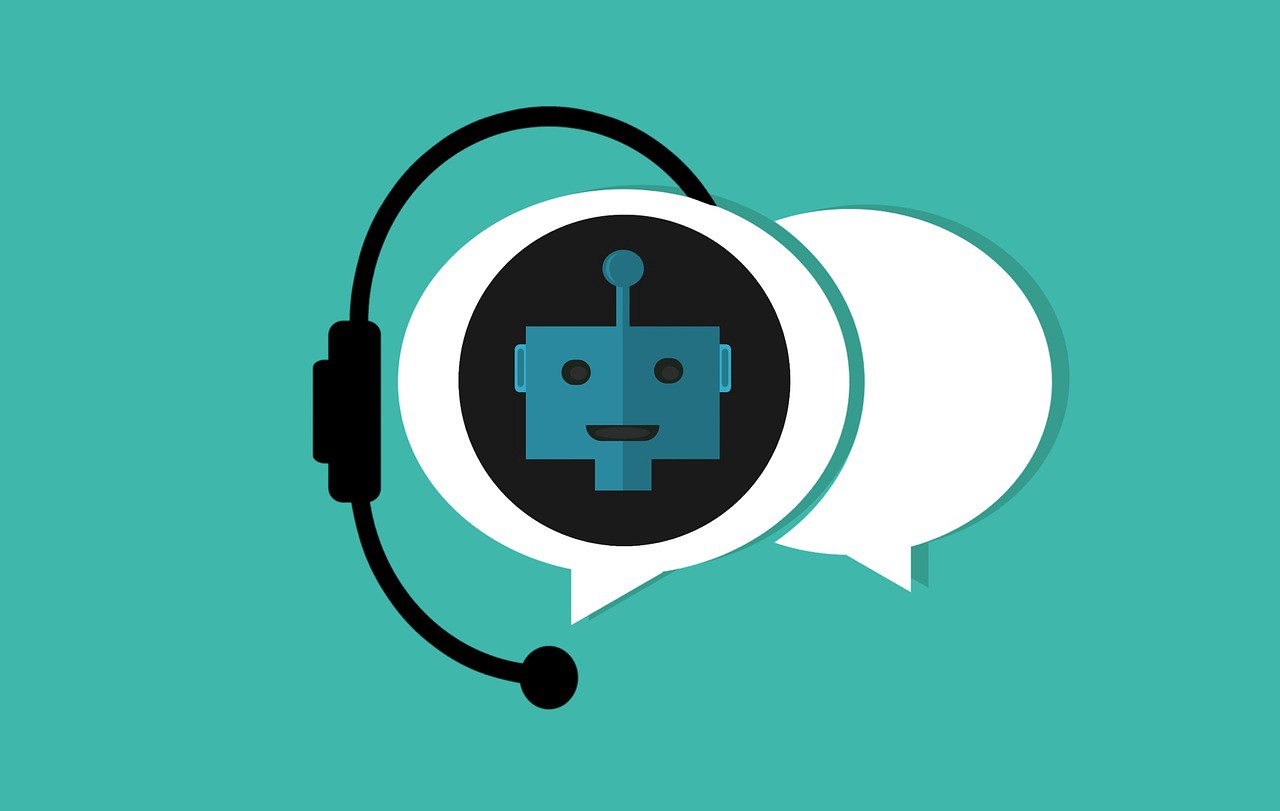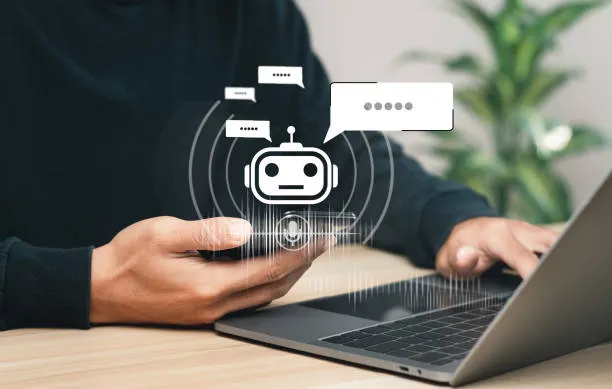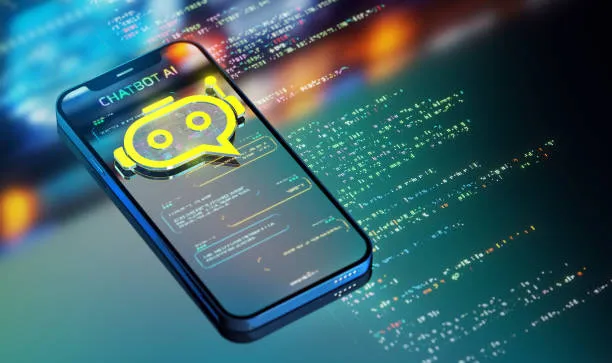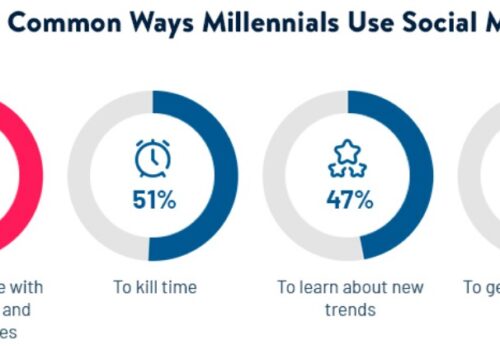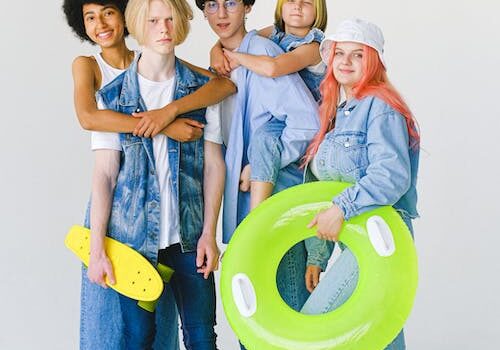Chatbots have revolutionized the way businesses engage with customers.
These remarkable AI-powered tools are not just a trend but a transformative force in the world of customer service and digital marketing.
Here are some Chatbot Statistics that reveal their growth, impact, and the future of automated conversations.
The following data about the chatbot industry will demonstrate the global transformation currently underway. This post will give you all of the information you require to validate your chatbot strategy.
| Statistic | Value |
|---|---|
| Market Size Growth (Last 2 Years) | 92% |
| Buyers Using Chatbots | 24% |
| Consumers Interacted with Chatbots | 67% |
| Operational Chatbots on Facebook | 300,000 (3x increase) |
| Completed Conversations by Chatbots | 68.9% |
| Common Simple Inquiries Answered by Chatbots | Up to 80% |
| Individuals Using Chatbots | 1.4 billion |
| Conversational AI Handling Global Support Conversations | 1 in 6 |
| Customers Couldn’t Differentiate Between Chatbot & Human | 27% |
| Facebook as Most Popular Chatbot Platform | Yes |
| Chatbot Usage in B2B Companies | 58% |
| Chatbot Usage in B2C Companies | 42% |
| Expected Business Time Savings by 2024 | 2.5 billion hours |
| Expected Chatbot Response Time | 59% (within 5 seconds) |
| Customer Satisfaction with Chatbot Interaction | 69% |
| Appreciation for Chatbots’ 24/7 Availability | 64% |
| Average Cost of One Chatbot Interaction | $0.50-$0.70 |
| Positive or Neutral Consumer Experience | 87.2% |
| Negative Consumer Experience | 12.8% |
| Reasons for Using Chatbots (Speedy Response) | Common |
| Chatbot Usage in SaaS Companies | 65.1% |
| Interactions with Chatbots in the Last Year | 60% |
| Expected Increase in Chatbot Usage by 2022 | 136% increase |
| Chatbots Causing Disruption in Businesses | 56% |
| Significant ROI from Chatbots | 57% |
| Response Rate of Chatbots (Average) | 35-40% |
| High Response Rates with Finest Bot Experiences | Up to 90% |
| Revenue Increase Due to Chatbots (Average) | 67% |
| Reduction in Customer Support Expenses | Up to 30% |
| Expected Work Hour Savings by 2024 | 2.5 billion hours |
| Consumers Prefer Chatbots for Simple Questions | 74% |
| Chatbots Used for Lead Generation | 36% |
| Monthly Users of Messaging Apps | 5 billion |
| Users of Chatbots in Messaging Apps | 1.4 billion |
| ROI Comparison: Retargeting Ads vs. Messenger Conversations | 30% Lower |
| Millennials’ Usage of Chatbots | 3 out of 5 |
| Purchases Made by Chatbot Users | 47% |
| Preference for Chatbots Over Customer Service Calls | 50% |
| Top 3 AI Chatbots for Business | Microsoft Cortana, Apple Siri, Google Assistant |
| Influence on Purchase Decision with Company Contact | 53% |
| Usage for Complaints or Detailed Information | 35% |
Statistics and Trends In Chatbots
Image credit: Pexels
- Chatbots are the quickest brand communication medium, with a 92% rise in market size over the last two years. Nearly a quarter of buyers used chatbots to communicate with businesses in 2020, up 13% from the past year.
- In the preceding 12 months, 67% of consumers throughout the world interacted with a chatbot.
- There are more than 300,000 operational chatbots on Facebook, which is a threefold rise from the preceding year and perfectly exemplifies the chatbot phenomenon that has been gaining traction in recent years.
- 68.9% of talks are handled from beginning to end.
- A chatbot system can respond to up to 80% of all common simple inquiries. Chatbots are used by 1.4 billion individuals.
- Conversational AI handled nearly one in every six global customer support conversations this year (artificial intelligence).
- 27% of customers couldn’t tell if their last customer service interaction was with a real person or a chatbot.
- When Facebook debuted its messaging service, it quickly became the most popular chatbot platform.
- Conversational marketing tools are used by more than 40% of consumers to make purchases, making them an ideal addition to your sales team.
- 88% of users had a conversation with a chatbot in 2022.
- 58% of B2B companies and 42% of B2C companies actively use chatbots.
- Chatbots are expected to save businesses up to 2.5 billion hours of work by 2024.
- 59% of customers expect a chatbot response within 5 seconds.
- 69% of consumers were satisfied with their last chatbot interaction.
- 64% of consumers appreciate chatbots for their 24/7 availability.
- The average cost of one chatbot interaction is $0.50-0.70.
- For 48% of users, solving issues is more important than a chatbot’s personality.
- 39% of business-consumer chats involve a chatbot.
Statistics on Chatbot Use and Engagement
- Consumers have a neutral or favorable experience with chatbots, according to 87.2% of respondents.
- Only 12.8% of respondents said they had a bad client experience.
- Consumers utilize chatbots for a variety of reasons, the most common of which would be to get a speedy response.
- When making a purchase, 41.3% of consumers use conversational marketing methods.
- One-third of customers want to make reservations using a chatbot.
- Bot-only chats have an average customer satisfaction percentage of 87.58%, which is 2% greater than the rate for conversations that are transferred to human agents.
- The United States has the most chatbot consumers (36%), followed by India (11%), and Germany (4%).
- C-level executives make up 41% of those who initiate online chats with organizations.
- Customers are presently keen on artificial intelligence (AI) assistance tools at a rate of 27%.
- In an emergency, 37% of individuals use a customer support bot to get a speedy response.
- Millennials are less inclined than baby boomers to foresee benefits from chatbots.
- Almost half of female buyers prefer to communicate with chatbots when making online purchases. However, only 36.81% of men do so.
- One out of every five live chats goes unanswered.
- Millennials use social media applications at a higher rate than any other generation, and 3 out of 5 have used chatbots at least once.
Statistics on Chatbot Conversions
Image credit: Pexels
- Chatbots have a response rate of 35-40% on average.
- With more engaged customers, the finest bot experiences can drive up to 90% response rates.
- Depending on the sector, chatbot technology can enhance website conversion rates by anywhere between 10% and 100%.
- Ecommerce stores that used the social media Facebook Messenger chatbot in combination with an abandoned cart chatbox saw a 7 to 25% increase in sales.
- Virtual assistant recommendations are trusted by nearly a quarter of respondents over human salespeople for product purchases.
- Better bot experiences combined with more connected audiences result in response rates of 80-90%.
- Chatbots, according to business leaders, have boosted revenues by 67% on average.
- According to 57% of firms, chatbots provide a huge return on investment for a small expenditure.
- AI chatbots double SDR workload efficiency.
- Businesses using AI chatbots have 3x better sales conversion.
- Generative AI chatbots boost sales conversion by 2.5x.
Statistics on Chatbot Benefits
- The response time of chatbots is faster than that of people.
- Consumers enjoy chatbots because they deliver quick responses, according to 68% of respondents.
- Consumers also prefer the notion that a chatbot may assist them outside of office hours and refer them to a live human.
- The most important feature of a chatbot, according to users, is the availability of service 24 hours a day, seven days a week.
- Chatbots have been shown to reduce operational customer support expenses by up to 30%.
- Chatbots are expected to save 2.5 billion work hours by 2024.
- 64% of consumers appreciate chatbots for their 24/7 availability.
- 74% of customers prefer chatbots for simple questions.
Challenging Facts Regarding Chatbot
- Consumers’ top concerns about chatbots are a lack of knowledge & an inability to tackle complex problems.
- Almost half of the customers believe chatbots obstruct their ability to communicate with a live person.
- 60% of customers appreciate the fact that chatbots can’t grasp their demands as well as humans can.
- Sixty percent of customers would rather wait and speak with a human than use a chatbot.
- 50% of customers enjoy chatting with AI chatbots.
- 1/3 of leads discuss concerns with AI chatbots post-qualification.
- 58% of B2B and 65.1% of SaaS businesses use chatbots.
Data on Chatbot Business and Marketing
- 55% of firms utilize chatbots to create higher-quality leads.
- Chatbots, according to business leaders, have boosted revenues by 67%.
- Pre-built AI systems, such as virtual agents and chatbots, are used by 40% of firms in the United States, the European Union, and China.
- Sales (41%), customer service (37%), and marketing are the most prevalent uses for chatbots (17%).
- Voice-to-text dictation (46%) and task collaboration (26%) are two of the most common AI chatbot uses.
- Chatbots, according to 64% of organizations, will enable them to create a more personalized client experience.
- Voice assistants are expected to be more expensive than smartphone apps, according to 50% of enterprises.
- Chatbots are used more frequently by businesses with less than fifty employees.
- 57% of businesses report significant ROI from chatbots.
- 36% of companies use chatbots for improved lead generation.
- 20% of chatbot use cases are for upselling.
Business Statistics and Chatbot Marketing
Statistics for a Specific Industry
Real estate (28%), tourism (16%), education (14%), healthcare (10%), and finance (five percent) are the top five businesses that gain the most from chatbots.
The most profitable area for chatbots is real estate.
Finance
- Chatbots are expected to handle 75-90% of banking & healthcare consumer queries by 2022, according to projections.
- By 2023, economic benefits from banking chatbots will total $7.3 billion worldwide.
- Since the outbreak of the worldwide epidemic, two-thirds of the world’s largest financial services companies have begun to use chatbots in their apps.
Travel/Hospitality
- A chatbot would be beneficial (40%) or extremely useful (26%) in managing their company and work travel arrangements, according to two-thirds of those polled.
- When it comes to arranging travel plans or evaluating booking choices, 37% of consumers would prefer to work with a chatbot.
- 87% of people would opt to connect with a travel chatbot if it could save them time and money.
- In the 2 and a half months since its inception, GRT Hotels & Resorts’ chatbot has exchanged over 175,000 messages.
Retail
- Over 1/3 of retail consumers would prefer to communicate with customer support via AI chatbot instead of live chat.
- By 2023, retail chatbots will account for more than 70% of all chatbot conversations. According to a poll conducted in 2019, more than 40% of US customers were using chatbots to interact with retailers.
- Clothing is the most popular commodity offered online using chatbots.
- Clothing is sold by 22% of the most profitable online stores, trailed by health products (9%), furniture (9%), electronics (8%), & jewelry (8%).
Recruiting
- By the end of the year 2022, it’s expected that 35% of companies will employ chatbots for a significant portion of the hiring process.
- XOR, a chatbot vendor for recruiting, claims that their chatbot solution accelerates the hiring process by 33%, screens 85% more applications with similar budgets, and costs 50% less each hire.
- 58% of candidates were eager to communicate with AI & recruitment chatbots throughout the early phases of the application process, according to an Allegis poll.
Statistics on Chatbot Development
- Consumer retail spending via speech bots is expected to reach $142 billion by 2024, increasing from 2.8 billion dollars in 2019.
- By the end of 2021, over half of businesses expect to use chatbots for customer service.
- Chatbots have been deployed by 2/3rd of financial service firms to their applications.
- With nearly 16,000 websites, including a chatbot, the United States leads the world.
- By 2027, the market for healthcare chatbots is expected to reach $340 million.
- By 2022, it is expected that 80% of enterprises will have implemented some type of conversational bot system.
- The goal is for social media to take over AI integration.
- 38.9% of chatbot users are in the IT software and service sector.
- Only 9% of online stores have set up chatbots.
Insights on Chatbot Forecasts & Predictions
- Chatbot eCommerce transactions are expected to reach $112 billion by 2023, according to projections.
- Chatbots are expected to save $8 billion by 2022, according to projections. By 2023, chatbots are expected to save organizations 2.5 billion hours.
- Chatbots will reduce the cost per customer engagement by $0.70 by 2022.
- By 2024, the global chatbot industry is expected to reach $994 million.
- Chatbots are expected to be around for a long time, according to 96% of organizations.
- Email marketing may be replaced by chatbots.
- In 2021, 85% of buyer interactions might be conducted without the use of a human agent.
- The global chatbot market is expected to expand at a CAGR of 23.3% from 2023 to 2030.
- Chatbot transactions in eCommerce are expected to reach $112 billion by 2024.
- 55% of companies using chatbots get more high-quality leads.
Quick Links:
- Napping Statistics, Facts, and Figures
- Generation Z Statistics, Facts, and Trends
- College Graduation Statistics, Facts and Figures
- Ecommerce Statistics
- Social Media Statistics
- Instagram Statistics
Conclusion: Chatbot Statistics 2025
Consumers may interact with brands more interactively and easily with chatbots. Chatbots appear to be the digital communication method of the future. The chatbot market is expected to grow globally, with millennials driving user polls.
Chatbots will assist you and your team in growing and maintaining current relationships. Chatbots can help you provide quick customer support, conserve time on repetitive activities, and increase lead generation.
Sources:
Startup Bonsai, OutGrow, Netomi, Landbot, Smallbizgenius, Backlinko, Tidio, Blogging Wizard, Finances Online, Leadoo, AIMultiple, Chatbot.com, 99firms, Drift, Grand View Research, Statista,

